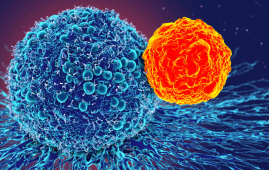

One of the primary causes of heart failure has been linked to a biological mechanism in the heart’s muscle cells, providing hope for potential future therapies.
In the course of the study, which was reported in Nature Communications, scientists took a specific enzyme from mice’s heart muscle cells. Surprisingly, the heart stayed healthy despite the researchers simulating conditions that would often result in heart disease.
The enzyme, known as iPLA2b, was then the subject of more research. Lysophosphatidylserine, a lipid molecule produced by iPLA2b, was examined by researchers to determine how it attaches to a receptor on the surface of cardiac muscle cells and what impact this has on the cell. They discovered that there was less necrosis of these cells when this receptor’s presence was diminished on cardiac cells in the lab.
These findings shed light on a novel bodily process that might cause heart injury, particularly under conditions of high cardiac pressure. The target of future treatments may be this mechanism.
For the first time, the breakdown product of lipid by the enzyme causes necrosis and heart failure. This finding can potentially lead to a new treatment for heart failure. More study is needed to know the significance at the clinical setting.”Kinya Otsu, Professor of Cardiology
Heart failure, in which the heart is unable to function properly as a result of one of several heart illnesses, is a leading cause of death in developed nations. As heart failure is disproportionately common among the elderly and many nations are seeing a shift in demographics toward older populations, this trend will probably continue to worsen until solutions are found.
Heart failure mortality rates have decreased thanks to modern medications, but the condition still has a high incidence, thus researchers are concentrating on finding new treatments.
The demise of the heart’s muscle cells is one factor being looked into as a cause of heart failure. Every cell in the body has a natural death process that is controlled by the body. But necrosis, or the uncontrolled death of numerous cells, continues to be a significant contributor to heart failure.
The revelation that lysophosphatidylserine and iPLA2b are linked to cell necrosis has the potential to serve as the foundation for future therapies. However, their removal has also been connected to age-related neuropathology and other progressive motor abnormalities in mice. The researchers describe it as a “double-edged sword” and contend that additional research is needed to comprehend this mechanism and create new treatments.
more recommended stories
 T-bet and the Genetic Control of Memory B Cell Differentiation
T-bet and the Genetic Control of Memory B Cell DifferentiationIn a major advancement in immunology,.
 Ultra-Processed Foods May Harm Brain Health in Children
Ultra-Processed Foods May Harm Brain Health in ChildrenUltra-Processed Foods Linked to Cognitive and.
 Parkinson’s Disease Care Advances with Weekly Injectable
Parkinson’s Disease Care Advances with Weekly InjectableA new weekly injectable formulation of.
 Brain’s Biological Age Emerges as Key Health Risk Indicator
Brain’s Biological Age Emerges as Key Health Risk IndicatorClinical Significance of Brain Age in.
 Children’s Health in the United States is Declining!
Children’s Health in the United States is Declining!Summary: A comprehensive analysis of U.S..
 Autoimmune Disorders: ADA2 as a Therapeutic Target
Autoimmune Disorders: ADA2 as a Therapeutic TargetAdenosine deaminase 2 (ADA2) has emerged.
 Is Prediabetes Reversible through Exercise?
Is Prediabetes Reversible through Exercise?150 Minutes of Weekly Exercise May.
 New Blood Cancer Model Unveils Drug Resistance
New Blood Cancer Model Unveils Drug ResistanceNew Lab Model Reveals Gene Mutation.
 Healthy Habits Slash Diverticulitis Risk in Half: Clinical Insights
Healthy Habits Slash Diverticulitis Risk in Half: Clinical InsightsHealthy Habits Slash Diverticulitis Risk in.
 Caffeine and SIDS: A New Prevention Theory
Caffeine and SIDS: A New Prevention TheoryFor the first time in decades,.

Leave a Comment